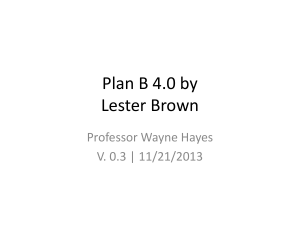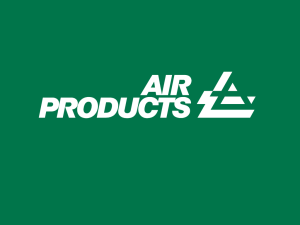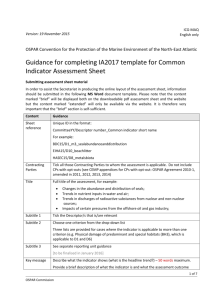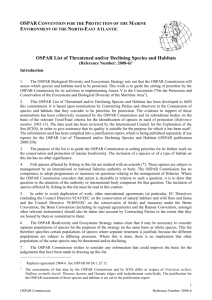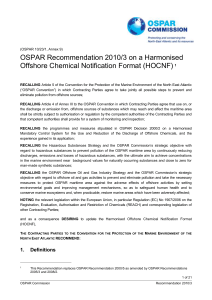Recommendation 2001/1
advertisement
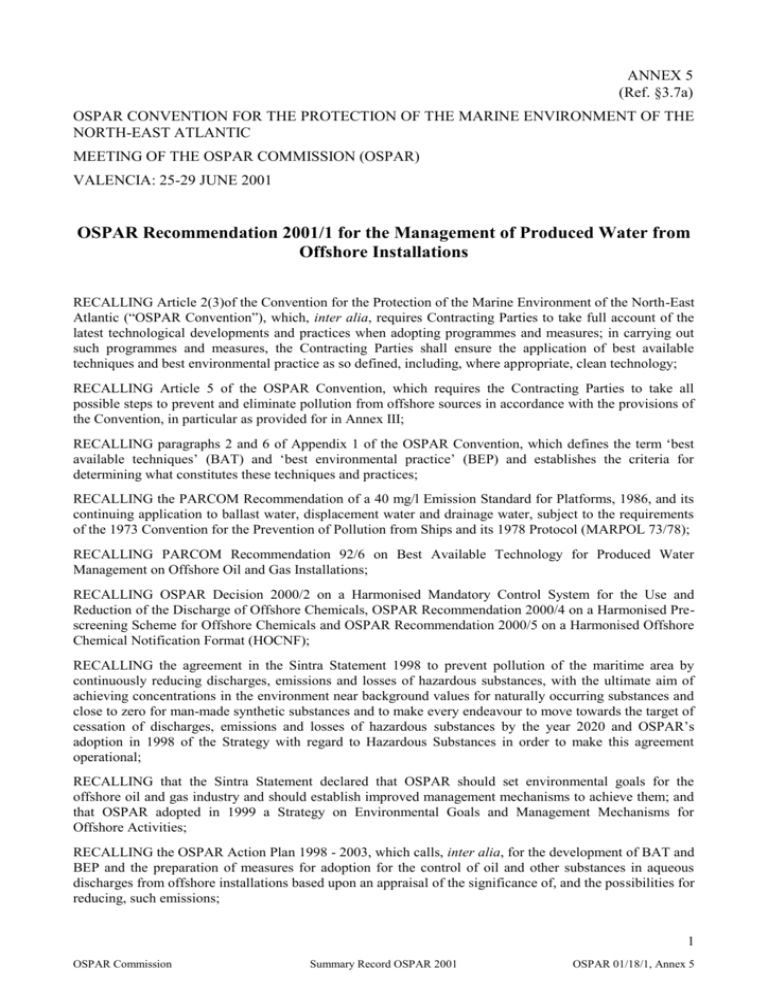
ANNEX 5 (Ref. §3.7a) OSPAR CONVENTION FOR THE PROTECTION OF THE MARINE ENVIRONMENT OF THE NORTH-EAST ATLANTIC MEETING OF THE OSPAR COMMISSION (OSPAR) VALENCIA: 25-29 JUNE 2001 OSPAR Recommendation 2001/1 for the Management of Produced Water from Offshore Installations RECALLING Article 2(3)of the Convention for the Protection of the Marine Environment of the North-East Atlantic (“OSPAR Convention”), which, inter alia, requires Contracting Parties to take full account of the latest technological developments and practices when adopting programmes and measures; in carrying out such programmes and measures, the Contracting Parties shall ensure the application of best available techniques and best environmental practice as so defined, including, where appropriate, clean technology; RECALLING Article 5 of the OSPAR Convention, which requires the Contracting Parties to take all possible steps to prevent and eliminate pollution from offshore sources in accordance with the provisions of the Convention, in particular as provided for in Annex III; RECALLING paragraphs 2 and 6 of Appendix 1 of the OSPAR Convention, which defines the term ‘best available techniques’ (BAT) and ‘best environmental practice’ (BEP) and establishes the criteria for determining what constitutes these techniques and practices; RECALLING the PARCOM Recommendation of a 40 mg/l Emission Standard for Platforms, 1986, and its continuing application to ballast water, displacement water and drainage water, subject to the requirements of the 1973 Convention for the Prevention of Pollution from Ships and its 1978 Protocol (MARPOL 73/78); RECALLING PARCOM Recommendation 92/6 on Best Available Technology for Produced Water Management on Offshore Oil and Gas Installations; RECALLING OSPAR Decision 2000/2 on a Harmonised Mandatory Control System for the Use and Reduction of the Discharge of Offshore Chemicals, OSPAR Recommendation 2000/4 on a Harmonised Prescreening Scheme for Offshore Chemicals and OSPAR Recommendation 2000/5 on a Harmonised Offshore Chemical Notification Format (HOCNF); RECALLING the agreement in the Sintra Statement 1998 to prevent pollution of the maritime area by continuously reducing discharges, emissions and losses of hazardous substances, with the ultimate aim of achieving concentrations in the environment near background values for naturally occurring substances and close to zero for man-made synthetic substances and to make every endeavour to move towards the target of cessation of discharges, emissions and losses of hazardous substances by the year 2020 and OSPAR’s adoption in 1998 of the Strategy with regard to Hazardous Substances in order to make this agreement operational; RECALLING that the Sintra Statement declared that OSPAR should set environmental goals for the offshore oil and gas industry and should establish improved management mechanisms to achieve them; and that OSPAR adopted in 1999 a Strategy on Environmental Goals and Management Mechanisms for Offshore Activities; RECALLING the OSPAR Action Plan 1998 - 2003, which calls, inter alia, for the development of BAT and BEP and the preparation of measures for adoption for the control of oil and other substances in aqueous discharges from offshore installations based upon an appraisal of the significance of, and the possibilities for reducing, such emissions; 1 OSPAR Commission Summary Record OSPAR 2001 OSPAR 01/18/1, Annex 5 RECALLING the conclusion of the Quality Status Report 2000 on the impacts of the discharges of produced water to the maritime area; RECALLING the outcome of the Workshop on Produced Water Management held in The Hague, 6-8 October 1997, as reported in paper SEBA 98/5/Info.1; RECOGNISING that produced water is a source of oil contamination and potential pollution of the sea in the maritime area and needs to be controlled through the use of BAT and BEP; RECOGNISING that there is a need to control the volumes of produced water discharged into sea water, particularly in oil fields and especially as producing fields mature, with a view to reducing the discharges into sea water of oil, including aromatics, and other substances; RECOGNISING ALSO that there is a need to reduce the concentration of oil and other substances in produced water discharged; CONSIDERING the need to develop an OSPAR background document on examples of current techniques and emerging techniques that may be part of a BAT and BEP solution for produced water management on offshore installations; and RECOGNISING the need for controls with regard to the management of drainage water and displacement water but acknowledging that this will be established through separate OSPAR programmes and measures; The Contracting Parties to the Convention for the Protection of the Marine Environment of the North-East Atlantic RECOMMEND: 1. Definitions 1.1 For the purpose of this Recommendation: “offshore installation” “produced water” “oil” “dispersed oil” “performance standard” “other substances” “BAT” “BEP” “operator” means any offshore installation as defined in the OSPAR Convention; means water which is produced in oil and/or gas production operations and includes formation water, condensation water and re-produced injection water; it also includes water used for desalting oil; means the total of hydrocarbons as may be determined according to the methods of analysis given in section 7 of this Recommendation; means hydrocarbons as determined according to the reference method of analysis given in § 7.2 of this Recommendation; means a limit value for a concentration in mg/l, calculated on the basis of the total weight of the relevant substances discharged per month, divided by the total volume of water discharged during the same period; means all or any of the following: solid particles from the reservoir; substances from the reservoir such as heavy metals; particles of scale and corrosion products; residues of chemicals injected at various points in the production system, for purposes such as controlling scaling, corrosion, foaming, bacterial growth or emulsion; and chemicals used in drilling and completing wells which are reintroduced into the production system during clean-up operations; means best available techniques as defined in Appendix 1 of the OSPAR Convention; means best environmental practice as defined in Appendix 1 of the OSPAR Convention; means a company controlling the operations of an offshore installation in a part of the maritime area which is under the jurisdiction of a Contracting Party. 2 OSPAR Commission Summary Record OSPAR 2001 OSPAR 01/18/1, Annex 5 2. Purpose and Scope 2.1 The purpose of this Recommendation is to prevent and eliminate pollution by oil and other substances caused by discharges of produced water into the sea. 2.2 This Recommendation applies only to those offshore installations that discharge produced water to the maritime area. 2.3 This Recommendation is in addition to the controls on the use and discharge of chemicals established by OSPAR Decision 2000/2 on a Harmonised Mandatory Control System for the Use and Reduction of the Discharge of Offshore Chemicals. 3. Goals 3.1 The overall goal of this Recommendation is to: a. reduce the input of oil and other substances into the sea resulting from produced water from offshore installations, with the ultimate aim of eliminating pollution from those sources; b. ensure that an integrated approach is adopted, so that reduction in oil discharge is not achieved in a way that causes pollution in other areas and/or other environmental compartments; c. ensure that effort is made to give priority to actions related to the most harmful components of produced water. 3.2 Each Contracting Party should ensure that the total quantity of oil in produced water discharged into the sea in the year 2006 from all offshore installations under its jurisdiction has been reduced by a minimum of 15% compared to the equivalent discharge in the year 2000 from all offshore installations under its jurisdiction at that time. 3.3 Contracting Parties should report to the meeting of the Offshore Industry Committee in 2008 their compliance with the goal as set out in § 3.2. The report should include an evaluation where appropriate of the BAT and BEP for their installations or other relevant factors, including the options: a. which have been implemented in order to meet this goal; b. which have not been considered feasible including the reasons for this, so as to ensure that information is available on the reasons why these offshore installations cannot contribute to achieving the goal; c. any other reasons why this goal has not been reached. 3.4 From 1 January 2002 each Contracting Party should ensure that plans to construct new offshore installations, or to modify substantially existing offshore installations, should take as a point of departure the minimisation of discharges and, where appropriate, the achievement of zero discharges of oil in produced water into the sea. 3.5 By 2020, Contracting Parties should achieve: a. a reduction of oil in produced water discharged into the sea to a level which will adequately ensure that each of those discharges will present no harm to the marine environment; b. in accordance with the objective and the timeframe of the OSPAR Strategy with regard to Hazardous Substances, a continuous reduction in discharges of hazardous substances via produced water, by making every endeavour to move towards the target of cessation of discharges of hazardous substances with the ultimate aim of achieving concentrations in the marine environment near background values for naturally occurring substances and close to zero for man-made synthetic substances. 4. Programmes and Measures 4.1 General Principles in pursuing the goals 4.1.1 Contracting Parties should ensure that BAT and BEP are applied on each installation and that BAT and BEP are regularly reviewed in accordance with paragraph 5.1. 3 OSPAR Commission Summary Record OSPAR 2001 OSPAR 01/18/1, Annex 5 4.1.2 The prevention and elimination of pollution by oil and other substances caused by discharges of produced water into the sea should be achieved by a reduction of the volume of produced water discharged into the sea (e.g. by injection, downhole separation or water shutoff) and/or a reduction of concentrations of oil and other substances in produced water. 4.1.3 Contracting Parties should encourage operators under their jurisdiction to include the prevention and reduction of discharge into the sea of produced water, and oil and other substances contained therein, as a priority item for continuous improvement in their environmental management systems. 4.1.4 Contracting Parties should ensure that when offshore installations, or relevant parts of them, are relocated for use elsewhere in the maritime area, an assessment and evaluation should take place to ensure that the relocated installation, or the relevant relocated part of an installation, performs according to BAT and BEP in respect of produced water 4.2 Performance standards 4.2.1 No individual offshore installation should exceed a performance standard for dispersed oil of 40 mg/l for produced water discharged into the sea. 4.2.2 By the end of the year 2006 no individual offshore installation should exceed a performance standard for dispersed oil of 30 mg/l for produced water discharged into the sea. 4.2.3 Contracting Parties should report to the meeting of the Offshore Industry Committee in 2008 the offshore installations which fail to meet the performance standard for dispersed oil of 30 mg/l for produced water discharged into the sea by the end of the year 2006. For each such installation, the report should include an evaluation of the BAT and BEP for that installation, including the options: a. which have been considered in order to meet this performance standard, but b. which have not been considered feasible including the reasons for this, so as to ensure that information is available on the reasons why these offshore installations cannot meet the performance standard. 4.2.4 By six weeks before the meeting of the Offshore Industry Committee in 2006, each Contracting Party should have: a. collected information on the sources and quantities of oil and other substances discharged with produced water within their jurisdiction; b. reviewed BAT and BEP for the management of produced water including achievable concentrations of oil and other substances; c. reported to the Committee the information collected and the conclusions reached in the review. On the basis of this information, the Offshore Industry Committee should review the goals for the reduction of discharges of oil and recommend to the Commission goals for loads and/or concentrations of oil and other substances as appropriate. 4.2.5 By the end of 2001 Contracting Parties should exchange information on methods of analysis of aromatic hydrocarbons on the basis of work in hand. Contracting Parties should collect data on aromatic hydrocarbons in produced water in particular with regard to: a. concentrations of different groups of aromatic hydrocarbons; b. methods of sampling and analysis for aromatic hydrocarbons; c. BAT and BEP for the reduction of the concentrations of these substances in produced water. On the basis of this information, the Offshore Industry Committee should prepare for the Commission in 2003 a proposal for one or more performance standards, including appropriate reference analytical methods, and a timetable for the dates by which any such performance standards should be met. 4.2.6 The dilution of treated or untreated produced water for the purpose of lowering the average concentration of oil or achieving compliance with the performance standard should be prohibited. 4 OSPAR Commission Summary Record OSPAR 2001 OSPAR 01/18/1, Annex 5 5. Improvement Programmes 5.1 Bearing in mind the dynamic nature of BAT and BEP, each Contracting Party should at least every five years carry out an assessment and evaluation of the application of BAT and BEP in order to ensure that each individual installation takes account of latest developments in BAT and BEP. Where needed to ensure the application of up-to-date BAT and BEP to individual offshore installations, the Contracting Party should arrange for an improvement programme to be drawn up for such installations and require it to be implemented. 5.2 For offshore installations which fail to meet the performance standards laid down and scheduled in §§ 4.2.1 and 4.2.2, the Contracting Parties should, once the failure to meet the targets has been established, report to the next meeting of the Offshore Industry Committee the content of the improvement programmes referred to in § 5.1, including the problems that they are addressing: a. for offshore installations discharging not more than 2 tonnes of dispersed oil per year, the average concentration of dispersed oil, the quantity of produced water discharged, the total quantity of dispersed oil discharged and the type of treatment equipment installed; b. for offshore installations discharging more than 2 tonnes of dispersed oil per year, the details as in indent (a) above, together with a full account of measures taken or planned in order to achieve compliance with the performance standard. The amount of dispersed oil as referred to in the indents above should be calculated on the basis of the daily average quantity of water discharged (m3/day) and the consequent monthly average values of dispersed oil discharged into the sea. All this information should subsequently be recorded in the implementation report from the Contracting Party. 6. Sampling 6.1 Discharges of produced water from manned installations 6.1.1 For offshore installations which discharge continuously, the determination of the quantity of dispersed oil discharged should be based on the results of at least 16 samples per month. Samples should be taken at equal time intervals. 6.1.2 The sampling point should be immediately after the last item of treatment equipment in, or downstream of, a turbulent region, and in any case before any subsequent dilution. 6.1.3 Methods of sampling yielding equivalent results, e.g. continuous monitoring, may be used, provided that they are calibrated to the satisfaction of the competent authority against the accepted method as laid down in §§ 6.1 and 6.2. 6.2 Discharges of produced water from unmanned installations, batch discharges and small discharges 6.2.1 For the following discharges of produced water, the frequency and timing of sampling should make sure that samples are representative of the effluent, taking into account operational aspects and logistics: 7. a. batch discharges of produced water; b. discharges of produced water from unmanned offshore installations; c. discharges into the sea of produced water containing not more than 2 tonnes of dispersed oil per annum. Analysis 7.1 For the purpose of this recommendation, the concentration of dispersed oil should be determined by the reference method specified in the next paragraph or an alternative method yielding equivalent results. These alternative methods may include on-line analysis techniques or continuous monitoring. Such methods should be calibrated against the reference method and approved by the competent authority. Use of 5 OSPAR Commission Summary Record OSPAR 2001 OSPAR 01/18/1, Annex 5 chemicals for the purpose of analysis should be under carefully controlled laboratory conditions approved by the competent authority. 7.2 The reference method for the determination of the dispersed oil content is the infrared method as given in Agreement 1997-16 on the Sampling and Analysis Procedure for the 40 mg/l Target Standard. A new reference method should be developed as a matter of priority. 7.3 In 2002, the Commission will review the method of the determination of the dispersed oil content specified in the previous paragraph with a view to establishing a new reference method, based on ISO 93772, supplemented, as appropriate, with a modification for the purpose of this recommendation. To this end: a. a programme for the comparison of analytical methods for the determination of the dispersed oil content should be developed by the Offshore Industry Committee in 2002 on the basis of, inter alia, work in hand. This programme is to be carried out by Contracting Parties concerned before 31 December 2002; b. Contracting Parties should submit to the Offshore Industry Committee in 2003 information on the outcome of their programme carried out with respect to this comparison; c. the Offshore Industry Committee in 2003 should propose a new reference method for the determination of the dispersed oil content to the Commission in 2003. 7.4 When applying methods of analysis using solvents, regeneration equipment should be applied to recover and reuse the solvents as many times as possible, in order to keep discharges, emissions and losses of these solvents to the environment as low as possible. 7.5 The Offshore Industry Committee in 2003 should propose to the Commission in 2003 one or more reference method(s) for the determination of aromatic hydrocarbons and, as appropriate, other hydrocarbons with the exception of dispersed oil. 7.6 Total hydrocarbons can be determined by the appropriate sum of analytical results of the application of the agreed reference methods for dispersed oil and aromatic hydrocarbons. 8. Entry into Force 8.1 This Recommendation has effect from 29 June 2001. 8.2 Upon taking effect, this Recommendation supersedes: 9. a. except in relation to ballast water, drainage water and displacement water, PARCOM Recommendation of a 40 mg/l Emission Standard for Platforms, 1986; b. PARCOM Recommendation 92/6 on Best Available Technology for Produced Water Management on Offshore Oil and Gas Installations; c. Agreement 1978-1 on Acceptance of the Provisional Target Standard of 40 ppm for Discharges from Offshore Oil Installations; d. Agreement 1988-1 on Conclusions on the 40 mg/l Target Standard; Implementation Reports 9.1 Contracting Parties with offshore installations that discharge produced water into the sea should present to the meeting of the Offshore Industry Committee in 2002 their respective plans for implementing this Recommendation. An assessment of the progress of these plans should form part of the 2003 review of the Offshore Strategy. 9.2 Subsequent reports on implementation should be made on a regular basis. 9.3 When reporting on implementation, the format as set out in the Appendix 1 should be used as far as possible. 6 OSPAR Commission Summary Record OSPAR 2001 OSPAR 01/18/1, Annex 5 Appendix 1 The format for implementation reports concerning OSPAR Recommendation 2001/1 for the Management of Produced Water from Offshore Installations (Note: In accordance with paragraph 9.3 of the Recommendation, this format should be used as far as possible in implementation reports) I. Implementation Report on Compliance Country: Reservation applies yes/no* Is measure applicable in yes/no* your country? If not applicable, then state why not (e.g. no relevant installation) Means of Implementation: by legislation By administrative action by negotiated agreement yes/no* Yes/no* yes/no* ......................................................................................................................................................................... ......................................................................................................................................................................... ......................................................................................................................................................................... ......................................................................................................................................................................... Please provide information on: a. specific measures taken to give effect to this measure; b. any special difficulties encountered, such as practical or legal problems, in the implementation of this measure; c. the reasons for not having fully implemented this measure should be spelt out clearly and plans for full implementation should be reported; d. if appropriate, progress towards being able to lift the reservation. ......................................................................................................................................................................... ......................................................................................................................................................................... ......................................................................................................................................................................... ......................................................................................................................................................................... * Delete whichever is not appropriate 7 OSPAR Commission Summary Record OSPAR 2001 OSPAR 01/18/1, Annex 5




